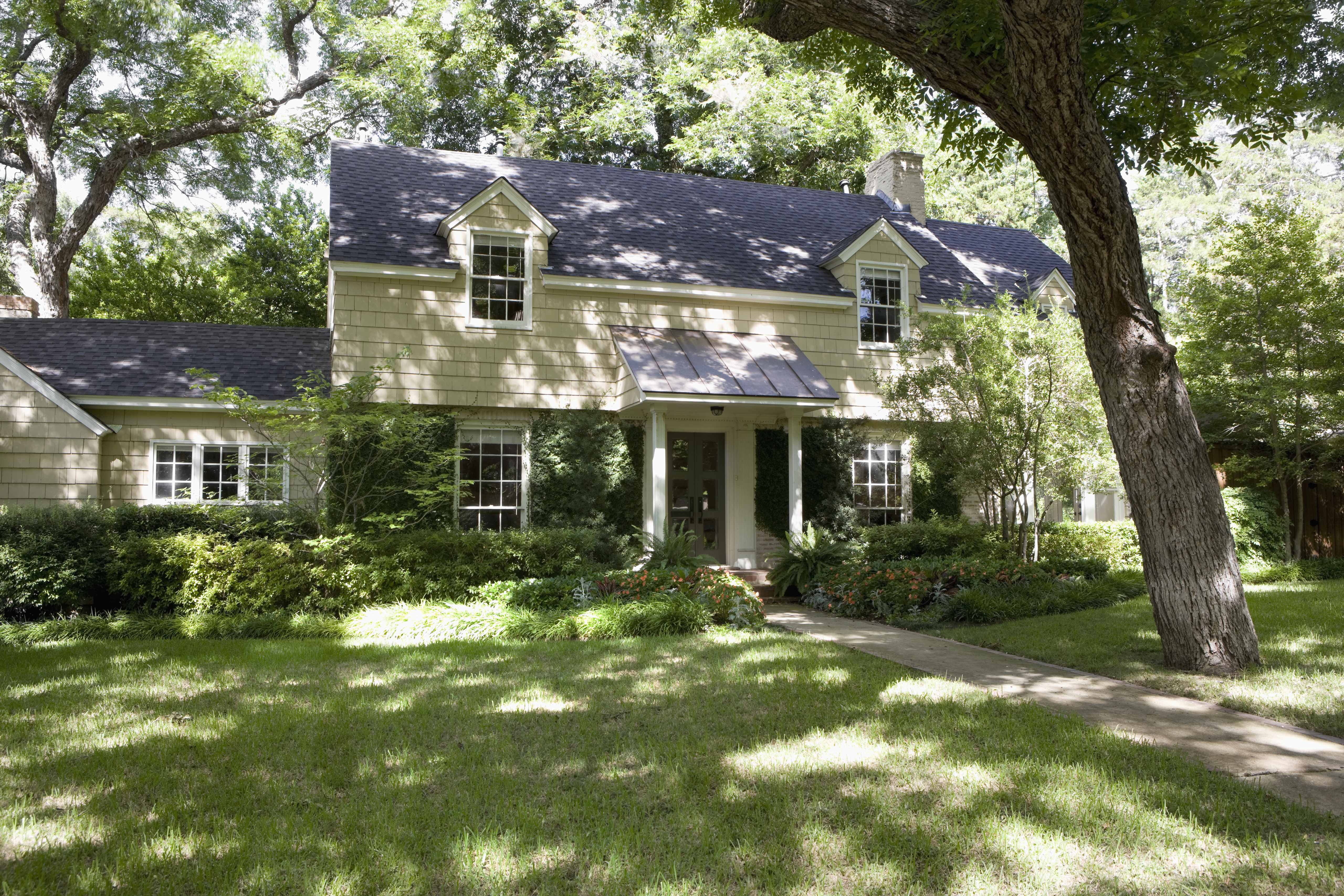
Roof replacement costs in Dallas depend on roof size, material, and more. Find out how much roof replacement costs in Dallas and what affects the final price.
Don’t let a leaky roof put your home at risk


Water stains, mold, and dripping are three key signs you need a roof repair or replacement.
Roof leaks can lead to structural damage, fire hazards, and health risks.
Quickly repairing your roof is crucial to preventing costly water damage.
Even a small roof leak can cause big problems, including costly damage to your home, so it’s important to repair roof leaks as quickly as possible. Some signs of a roof leak include water stains on your ceilings or walls, damaged or missing shingles, mold or dripping sounds in the attic, and musty odors. However, there are more red flags to watch for that indicate a leak. Learn why you should be aware of roof leaks and some common signs to look for to keep your home protected.
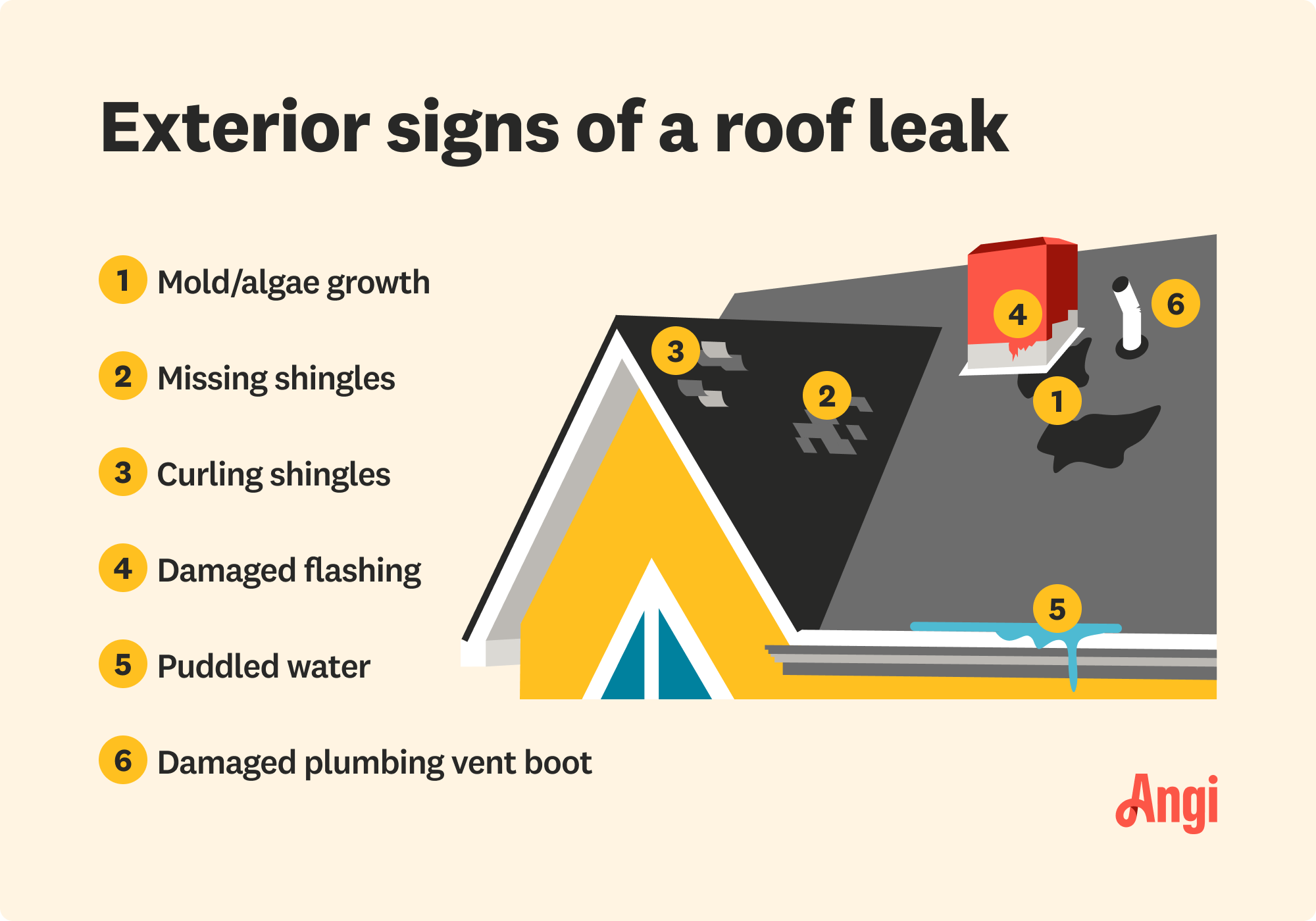
Do you see yellow, brown, or faint stains on your ceiling and walls? It’s likely due to a leaky roof. These water spots are often located in the center of the room but may be in the corners or along an exterior wall.
If water has reached your walls and ceilings, it's time to repair the issue to prevent mold, rotted framing, and damaged ceilings. Contact a local roof repair pro to find the trouble spot and repair it thoroughly.
"Water generally will flow across the top of the sheetrock or plaster until it finds the lowest point, and that is where the water will appear," says Ami Feller, owner of Roofer Chicks in New Braunfels, TX. "Often that means the water comes into light fixtures, because the weight of the fixture slightly pulls down the drywall. If this happens, no need to panic. Just turn off the fixture to stop the flow of electricity and call a professional."
If you have mold growing on an exterior wall, you probably have a roof leak. Use a measuring tape to determine how far the mold spot is from the corner or a door. Measure the same distance on the outside of the wall to look for the culprit. If the ground slopes toward the house or a downspout is emptying near the wall, you’ve likely found the root of the problem. A roofer can help you make a plan to fix the issue.
While wet surfaces or mold growth due to a leak aren't always visible, the moisture will often produce a musty smell. If you notice a lingering unpleasant odor in your home that doesn’t go away in a few days, it could indicate a roof leak.
If you see or hear dripping in your attic or anywhere else in your house, a roof leak is likely to blame. Even if the leak isn't always present, you should check it out to ensure it doesn't get worse. You may have an ice dam that formed when ice and snow froze and thawed. Even intermittent leaks can cause big damage.
If your shingles are compromised, water can enter your home. If you notice any curled, missing, or broken shingles on your roof, ensure you repair or replace them as quickly as possible.
If you spot damaged or missing metal flashing around the edges of your vents, roof, or chimney, water can leak into your home. If your step flashing rusts or becomes loose, water seeps inside.
Damaged flashing is often due to drying and cracking, storms, and high winds. You can sometimes do a roof repair on these spots without replacing your entire roof, but you'll want an expert to take a look.
"Chimneys are a very common source for roof leaks; I would definitely recommend hiring a professional to redo the flashing if that is the leak source," says Feller. "Ensure the contractor you choose is knowledgeable on flashing repairs and provides a warranty for the work."
If you notice pools of water on your roof, it’s worth having a roofing expert check it out. If you have a flat roof especially, water can sometimes create puddles in certain areas.
Watch for leaks by looking inside your home near where the puddle of water is located. Take a close look around the potential problem area, as the leak might not occur directly below the pool of water.
If your plumbing vent (usually a silver or white pipe sticking out of your roof) is torn or rotted, water can travel down the outside of the pipe and into your house. The vent boot is the protective housing around the base of the vent that forms a watertight seal against your roof. Replace your vent boot if it's damaged. If nails are missing at the base, but the boot looks fine, replace the nails.
Pro Tip: Be sure to cover any exposed nails with roofing sealant to prevent them from oxidizing, which will eventually lead to a leak when the fastener rusts out.
Roof leaks can lead to dangerous consequences for your home and everyone in it. Once water enters your home through the roof, you might face anything from structural damage to health problems.
Ceiling damage: Water intrusion can stain and weaken your ceiling and even lead to ceiling collapse.
Damaged drywall: When water runs down the interior structure of your walls, your drywall can sag, warp, and deteriorate.
Fire hazards: Your attic contains electrical wiring, and water and electricity are a dangerous combination. Water can also enter lights and other electrical fixtures, flooding them and increasing the risk of a fire.
Mold and mildew: The moisture that a roof leak lets into your house can jump-start mold or mildew growth that can quickly spread throughout your home, causing respiratory issues and other health risks for you and your family.
A roof leak near electrical wiring is a serious safety concern because water can come into contact with exposed wires, potentially causing electrical short circuits, sparking, and fire hazards. If you suspect a leak near wiring, immediately turn off the power to the area and call a roofer and an electrician to handle the issue.
The majority of homeowners want to schedule roof repairs within two weeks, closely followed by a demand for urgent repairs within one to two days. Don’t wait too long to call a roofer who can get a leak under control and prevent further water damage to your home.
Unless you have extensive roofing experience, you should call a professional to handle roof leak repairs. The cause of a leaky roof isn’t always obvious, and a licensed roofer will be able to pinpoint the problem, determine the extent of the damage, and repair any damaged material to stop the leak. DIY roofing repairs also pose safety risks.
If you spot any signs of a roof leak, it’s best to call a local roof leak repair professional as soon as possible. The longer your roof has a leak, the more damage it will do. A pro should investigate any sign of water intrusion to determine the source and make any necessary repairs.
If you do find a roof leak that’s caused interior repairs, and you have the leak fixed, you should wait for another heavy rain (or two). That way, you can make sure that the leak is completely fixed before making any costly interior repairs.
The cost to repair a leaky roof is $900, though it ranges between $700 and $3,000. The price to fix a roof leak varies by the severity of the leak. The type of damage also impacts the cost. For instance, fixing a leak due to damaged shingles can cost as little as $80 plus labor, while repairing a leak due to structural damage or chimney cracks can cost $9,000 or more. Repairing cracked flashing runs $200 to $900, while fixing faulty seals can range between $40 and $650.
The best way to handle a roof leak is to avoid one altogether. Keeping your roof maintained and in good condition will lower your chances of a leak. Here are some key maintenance tips to keep your roof from leaking.
Hire a roof inspector annually to alert you to any potential problems.
Perform a visual check for missing or damaged shingles or flashing.
Clean your gutters twice a year to prevent drainage problems.
Ensure your attic is properly ventilated and all vents are clear and working properly.
From average costs to expert advice, get all the answers you need to get your job done.

Roof replacement costs in Dallas depend on roof size, material, and more. Find out how much roof replacement costs in Dallas and what affects the final price.
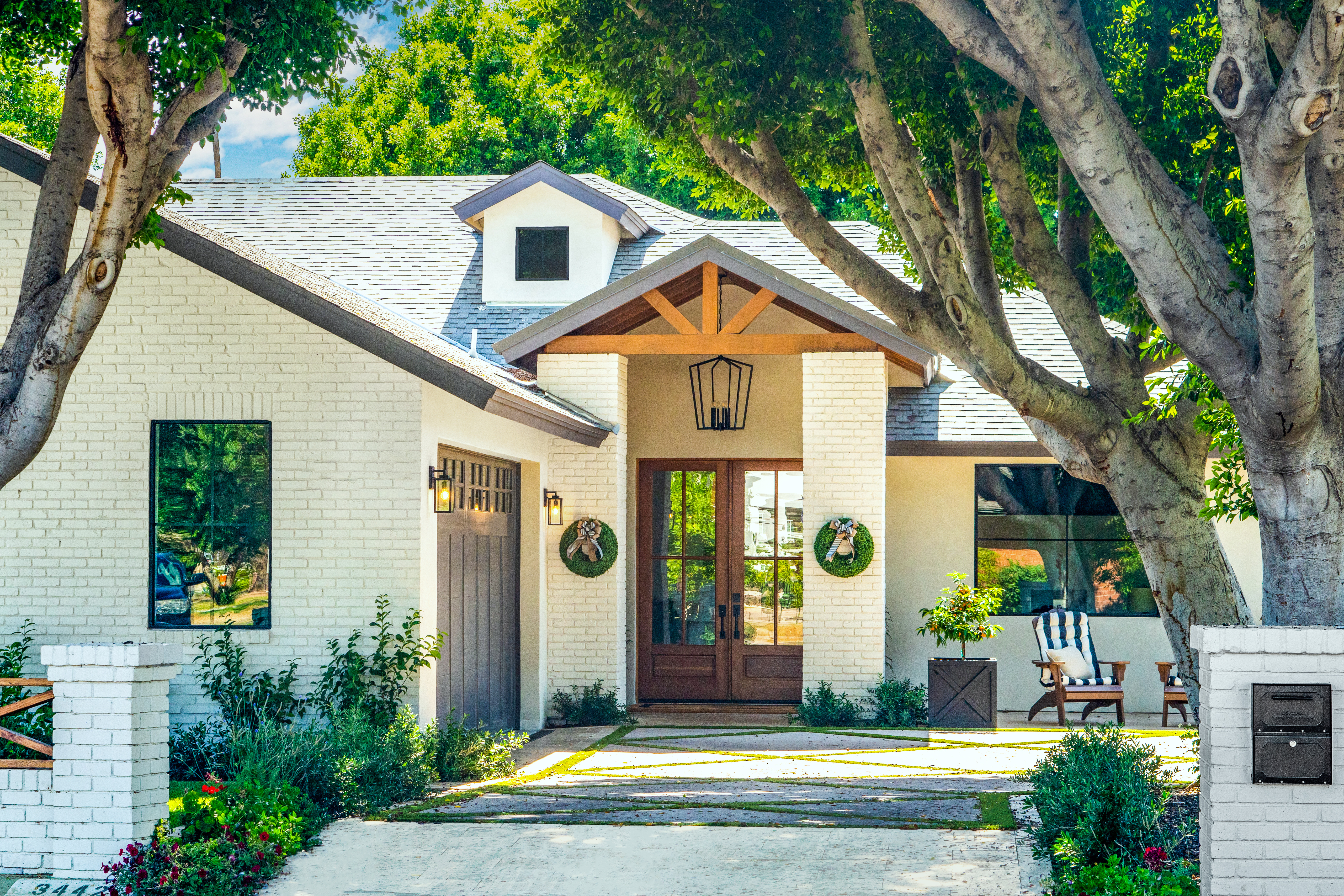
Roof repair costs in Dallas vary based on the type and extent of the damage and your roofing material. Learn how much roof repair costs in Dallas with our guide.
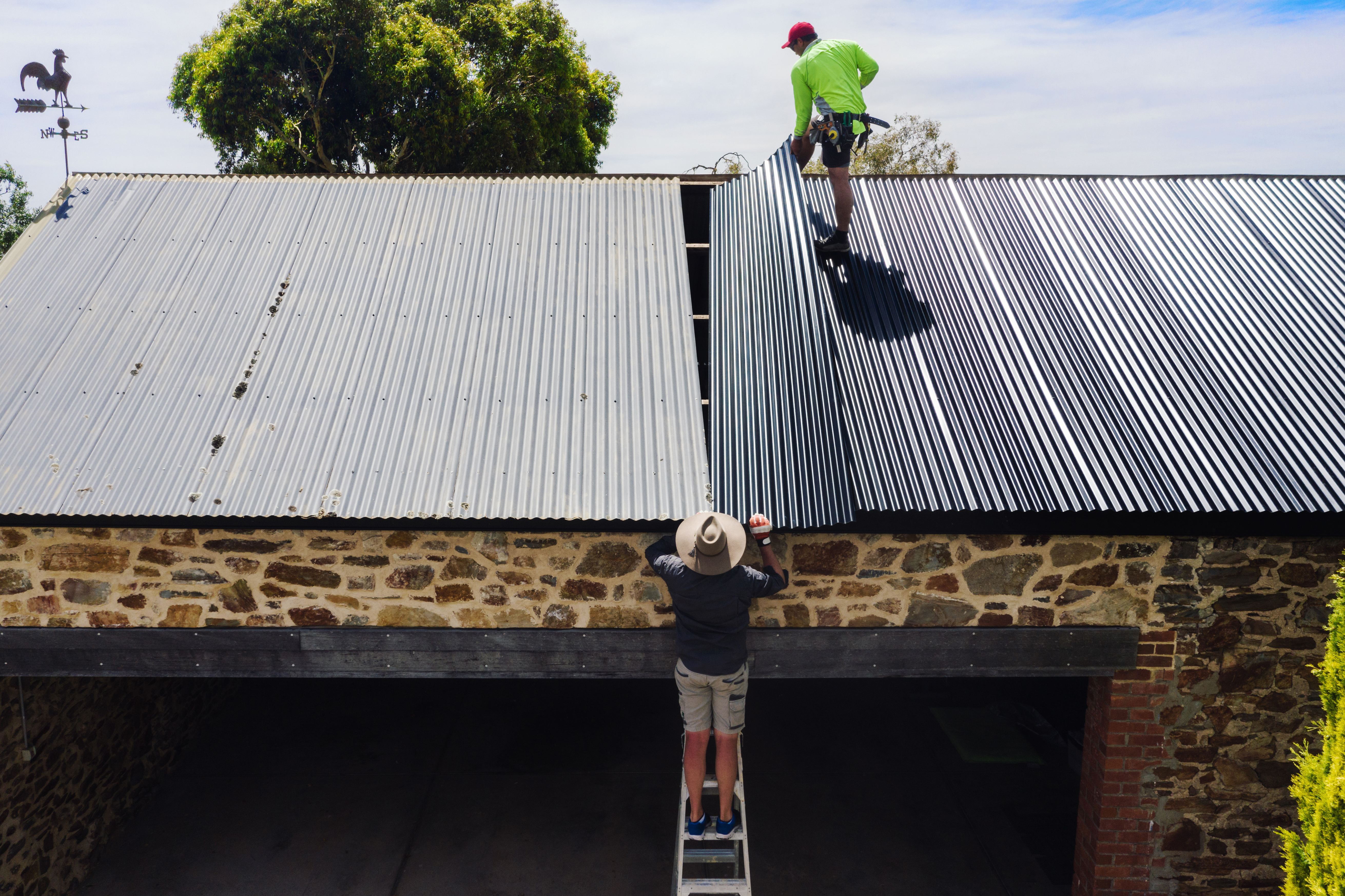
Learn about metal roof costs in Dallas and what factors affect pricing to get an idea of how much you should budget for your roof project.
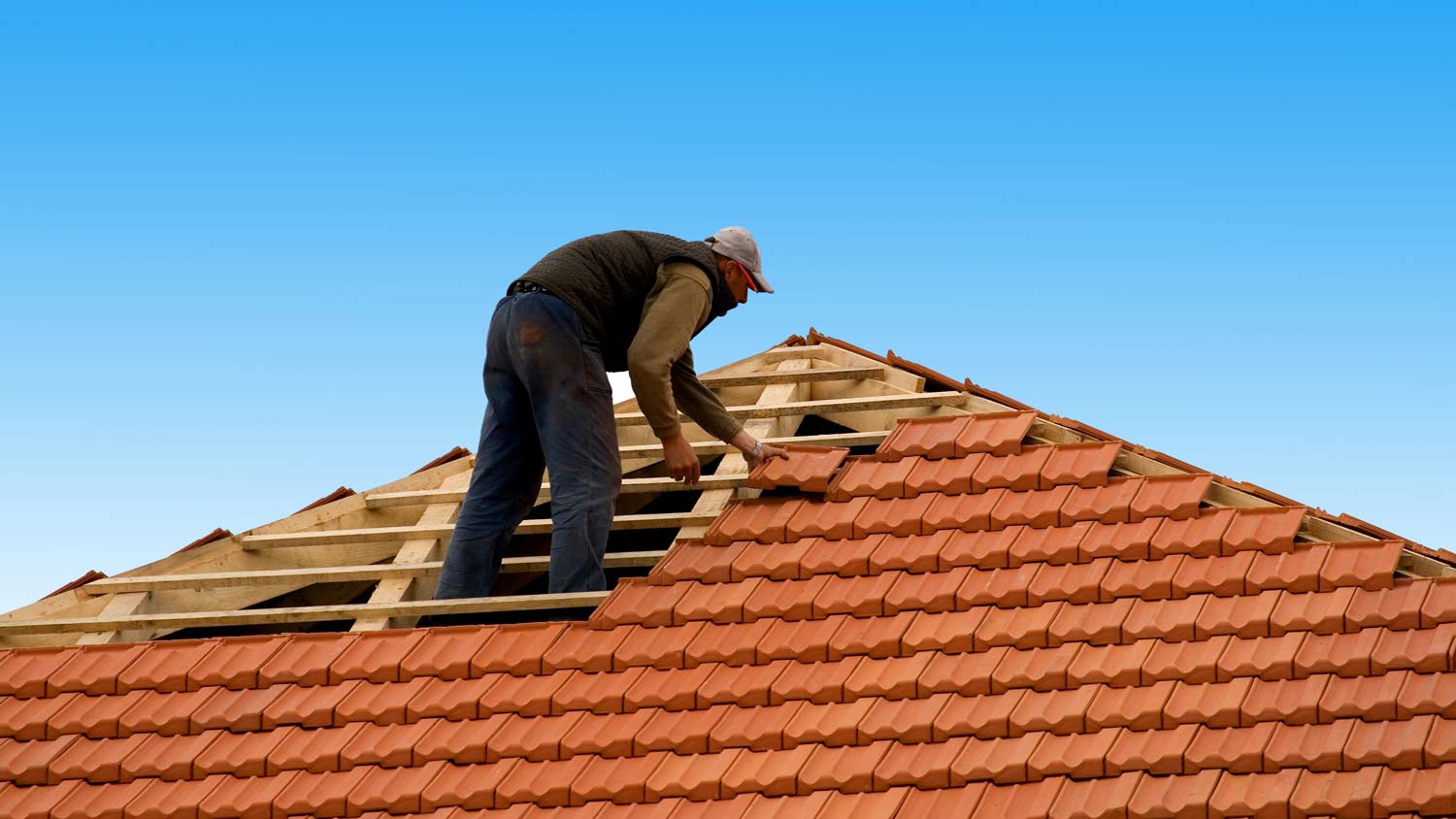
Find out the average tile roof repair cost, key price factors, and ways to save. Get expert tips to plan your tile roof repair project with confidence.

There is a calculation for how many soffit vents you need, depending on your square footage. Discover where to install them and what happens to your attic air during winter.

An attic without proper ventilation can cause a number of roofing problems, inside and out. Here’s how you can tell if a poorly ventilated attic is wrecking your roof.